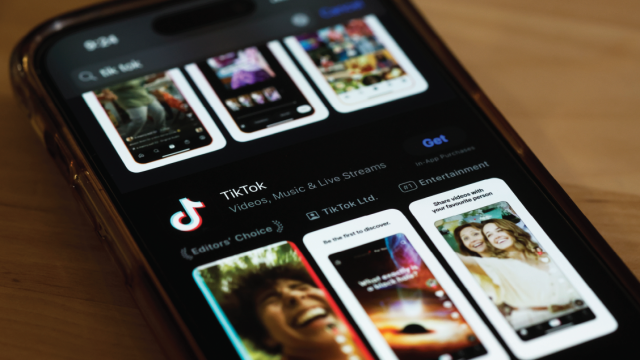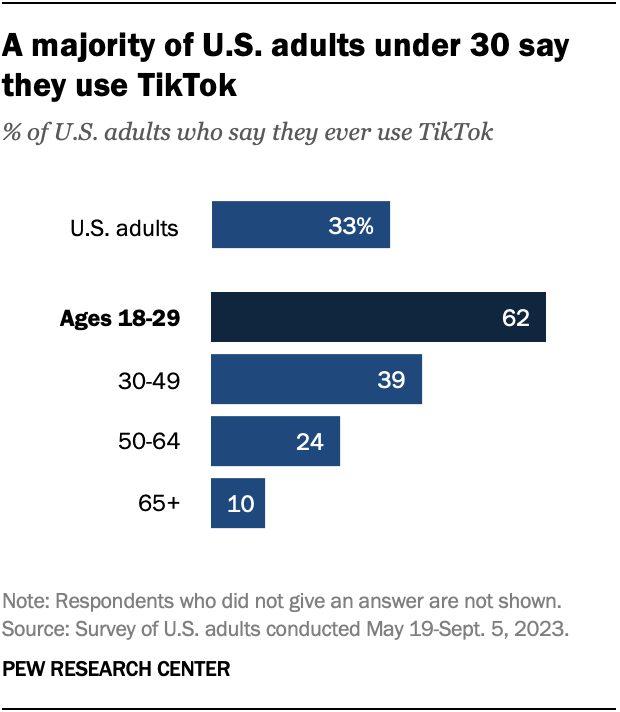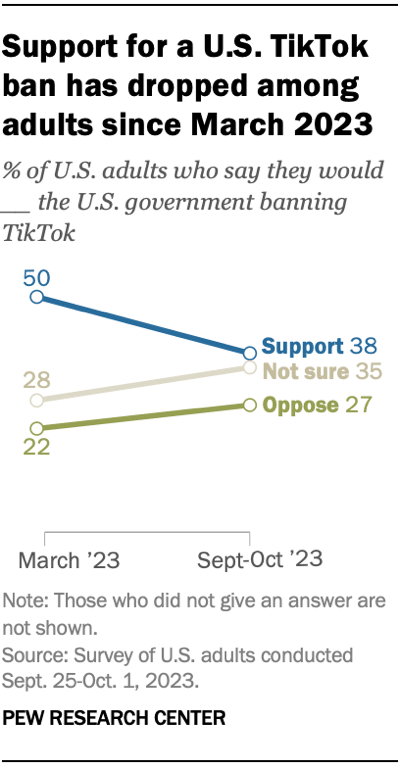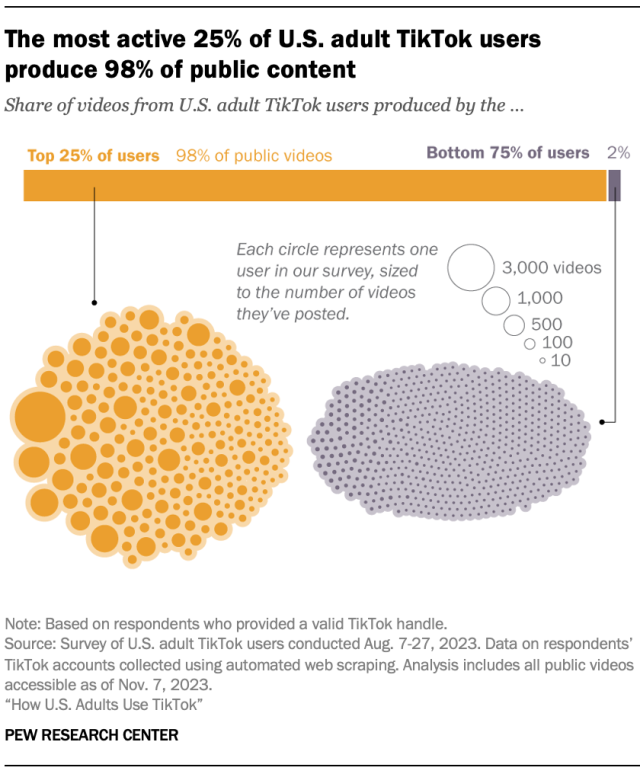
Increasing shares of U.S. adults are turning to the short-form video sharing platform TikTok in general and for news.
Pew Research Center conducted this analysis to better understand Americans’ use and perceptions of TikTok. The data for this analysis comes from several Center surveys conducted in 2023.
More information about the surveys and their methodologies, including the sample sizes and field dates, can be found at the links in the text.
Pew Research Center is a subsidiary of The Pew Charitable Trusts, its primary funder. This is the latest analysis in Pew Research Center’s ongoing investigation of the state of news, information and journalism in the digital age, a research program funded by The Pew Charitable Trusts, with generous support from the John S. and James L. Knight Foundation.
This analysis draws from several Pew Research Center reports on Americans’ use of and attitudes about social media, based on surveys conducted in 2023. For more information, read:
At the same time, some Americans have concerns about the Chinese-owned platform’s approach to data privacy and its potential impact on national security. Lawmakers in the U.S. House of Representatives recently passed a bill that, if passed in the Senate and signed into law, would restrict TikTok’s ability to operate in the United States.
Here are six key facts about Americans and TikTok, drawn from Pew Research Center surveys.
A third of U.S. adults – including a majority of adults under 30 – use TikTok. Around six-in-ten U.S. adults under 30 (62%) say they use TikTok, compared with 39% of those ages 30 to 49, 24% of those 50 to 64, and 10% of those 65 and older.
In a 2023 Center survey, TikTok stood out from other platforms we asked about for the rapid growth of its user base. Just two years earlier, 21% of U.S. adults used the platform.

A majority of U.S. teens use TikTok. About six-in-ten teens ages 13 to 17 (63%) say they use the platform. More than half of teens (58%) use it daily, including 17% who say they’re on it “almost constantly.”
A higher share of teen girls than teen boys say they use TikTok almost constantly (22% vs. 12%). Hispanic teens also stand out: Around a third (32%) say they’re on TikTok almost constantly, compared with 20% of Black teens and 10% of White teens.
In fall 2023, support for a U.S. TikTok ban had declined. Around four-in-ten Americans (38%) said that they would support the U.S. government banning TikTok, down from 50% in March 2023. A slightly smaller share (27%) said they would oppose a ban, while 35% were not sure. This question was asked before the House of Representatives passed the bill that could ban the app.
Republicans and Republican-leaning independents were far more likely than Democrats and Democratic leaners to support a TikTok ban (50% vs. 29%), but support had declined across both parties since earlier in the year.
Adults under 30 were less likely to support a ban than their older counterparts. About three-in-ten adults under 30 (29%) supported a ban, compared with 36% of those ages 30 to 49, 39% of those ages 50 to 64, and 49% of those ages 65 and older.
In a separate fall 2023 survey, only 18% of U.S. teens said they supported a ban.

A relatively small share of users produce most of TikTok’s content. About half of U.S. adult TikTok users (52%) have ever posted a video on the platform. In fact, of all the TikTok content posted by American adults, 98% of publicly accessible videos come from the most active 25% of users.
Those who have posted TikTok content are more active on the site overall. These users follow more accounts, have more followers and are more likely to have filled out an account bio.
Although younger U.S. adults are more likely to use TikTok, their posting behaviors don’t look much different from those of older age groups.

About four-in-ten U.S. TikTok users (43%) say they regularly get news there. While news consumption on other social media sites has declined or remained stagnant in recent years, the share of U.S. TikTok users who get news on the site has doubled since 2020, when 22% got news there.
Related: Social Media and News Fact Sheet
TikTok news consumers are especially likely to be:
- Young. The vast majority of U.S. adults who regularly get news on TikTok are under 50: 44% are ages 18 to 29 and 38% are 30 to 49. Just 4% of TikTok news consumers are ages 65 and older.
- Women. A majority of regular TikTok news consumers in the U.S. are women (58%), while 39% are men. These gender differences are similar to those among news consumers on Instagram and Facebook.
- Democrats. Six-in-ten regular news consumers on TikTok are Democrats or Democratic-leaning independents, while a third are Republicans or GOP leaners.
- Hispanic or Black. Three-in-ten regular TikTok news users in the U.S. are Hispanic, while 19% are Black. Both shares are higher than these groups’ share of the adult population. Around four-in-ten (39%) TikTok news consumers are White, although this group makes up 59% of U.S. adults overall.

A majority of Americans (59%) see TikTok as a major or minor threat to U.S. national security, including 29% who see the app as a major threat. Our May 2023 survey also found that opinions vary across several groups:
- About four-in-ten Republicans (41%) see TikTok as a major threat to national security, compared with 19% of Democrats.
- Older adults are more likely to see TikTok as a major threat: 46% of Americans ages 65 and older say this, compared with 13% of those ages 18 to 29.
- U.S. adults who do not use TikTok are far more likely than TikTok users to believe TikTok is a major threat (36% vs. 9%).


